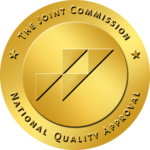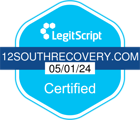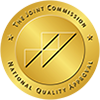Key Takeaways
- Both dark liquor and clear liquor can be addictive depending on drinking habits.
- Dark liquors contain more congeners, which may lead to worse hangovers and health effects.
- Alcohol addiction can develop regardless of liquor type and requires professional treatment.
Types and Addiction Risk
Although alcohol is available in a variety of forms including whiskey, rum, vodka, and gin, not all liquors interact with the body uniformly. Some claim that dark liquors lead to more serious hangovers or addiction, while others believe clear liquors are easier on the body. Teaching yourself how the different liquor options impact your brain behavior will help make better decisions for yourself. When alcohol starts to wreak havoc on your life, 12 South Recovery in Lake Forest, CA, is available there to help you take control and feel good again.

What Is Dark Liquor?
Dark liquor refers to alcoholic spirits that are brown or amber in color due to the way they are distilled and aged. These liquors often absorb color and flavor from the barrels they’re stored in. Common types include:
- Whiskey
- Brandy
- Dark rum
- Cognac
These drinks tend to have stronger flavors and are aged longer. The aging process introduces compounds such as congeners, which are byproducts of fermentation. These compounds not only deepen the color but also intensify the physiological effects on the body, including potential toxicity.
Dark liquors are often seen as more “mature” or “full-bodied,” but that complexity may come at a price. Drinking dark liquor often can cause more hangovers, headaches, and may lead to alcohol dependence over time.
What Is Clear Liquor?
Clear liquor, on the other hand, goes through a distillation process that strips away most impurities and congeners. This often results in a cleaner taste and lighter feel. This makes it easier for some people to consume in larger amounts without immediate discomfort. Examples include:
- Vodka
- Gin
- White rum
- Tequila blanco
These liquors are not aged in barrels, which helps maintain their clear appearance. Clear liquors are often considered to be cleaner and smoother in taste. However, this doesn’t necessarily mean they are safer or less addictive.
Some believe clear liquor leads to milder hangovers. But the effects really depend on how much you drink, how often, and your personal tolerance.
The real issue is how these substances impact the brain’s reward system. Both dark and clear liquors can trigger it just as strongly.
Is Dark Liquor More Addictive Than Clear Liquor?
The answer isn’t straightforward. Both types of liquor contain ethanol, the primary intoxicating agent that can lead to addiction. Dark liquors contain additional substances like congeners. These can affect how your body processes alcohol and how you feel after drinking.
Factors That Can Influence Addictiveness:
- Ethanol Content:
Dark and clear liquors typically have similar alcohol content. Addiction risk goes up when someone drinks often. It’s even higher when alcohol becomes a way to handle stress or emotional pain. - Congeners:
Dark liquor contains more congeners, byproducts of the fermentation process, that can make hangovers more intense. Symptoms may include headaches, nausea, and fatigue. Some people may drink less because of these effects. Some people may find the strong buzz or sense of relief from drinking dark liquor comforting. This can make them want to keep drinking, and over time, it may turn into a habit that’s hard to break. - Personal Preferences:
Someone who enjoys the smooth, almost tasteless profile of vodka might start drinking it more often. They may not even notice how much they’re consuming over time. Its mild flavor makes it easier to overlook the effects. Others might turn to whiskey for its bold, warm flavor, especially when they’re seeking comfort or a way to unwind. What starts as a casual drink can slowly evolve into a regular habit that’s difficult to break. - Psychological Associations:
When someone starts to associate a specific liquor with feeling more at ease or confident, it becomes a comfort. They may begin turning to it during emotionally challenging or high-stress moments. Over time, this emotional link may lead to repeated use, increasing the risk of alcohol abuse and dependency.
Is Dark Liquor Worse For You Than Clear Liquor?
This involves looking at several variables. While both can contribute to long-term health problems when misused, dark liquor may be harder on the body in some ways.
Potential Health Effects of Dark Liquor:
- Higher congener levels can worsen hangovers.
- May increase inflammation in the body.
- Can be more taxing on the liver due to added compounds.
- May impact sleep and digestion more than clear liquors.
Clear Liquor Effects:
- Still poses risks of liver damage, addiction, and mental health effects.
- Easier to consume in larger amounts due to its mild flavor.
- May lead to unintentional overconsumption.
So, is dark liquor worse than clear? Not necessarily. Both can be dangerous in excessive quantities. The health consequences depend on drinking habits rather than the type of liquor alone.
Why Should You Never Mix Dark and Clear Liquor?
A common myth among drinkers is that mixing dark and clear liquors leads to worse hangovers or faster intoxication. There’s some truth to that, but the science is nuanced.
Why Mixing Is Risky:
- Congeners and Purity Clash: Mixing dark liquors with clear ones can stress your body and make it harder to process alcohol.
- Inconsistent Alcohol Content: Switching between liquors can make it easy to underestimate how much you’ve consumed.
- Digestive Impact: Different alcohols affect the stomach differently; combining them may cause nausea or vomiting.
- Greater Risk of Blackouts: Mixing alcohols can impair your judgment faster, leading to increased binge drinking and risky behavior.
Mixing types of liquor doesn’t necessarily make them more addictive. However, it can increase harmful effects and raise the risk of frequent alcohol abuse.
Alcohol Abuse and Addiction Risk Factors
Whether someone chooses dark or clear liquor, consistent misuse can spiral into alcohol addiction. Substance abuse doesn’t always look the same. It can develop slowly or come on suddenly, depending on risk factors such as:
- Family history of addiction
- Mental health conditions
- Trauma or chronic stress
- Social drinking habits
- Lack of support systems
Warning Signs of Alcohol Addiction:
- Cravings or strong urges to drink
- Drinking alone or in secrecy
- Needing more alcohol to feel the same effect
- Neglecting responsibilities
- Withdrawal symptoms like anxiety or tremors
If these signs feel familiar, it may be time to seek alcohol treatment.
The Role of Alcohol Treatment in Recovery
Alcohol addiction isn’t about weak willpower, it’s a medical condition that needs professional care. At 12 South Recovery, we provide evidence-based treatment for individuals struggling with both dark liquor and clear liquor abuse.
Our Treatment Approach Includes:
- Detox: Safe withdrawal from alcohol under medical supervision.
- Therapy: Individual and group counseling to address triggers and patterns.
- Dual Diagnosis: Treatment for co-occurring mental health conditions.
- Aftercare Planning: Relapse prevention strategies and sober support.
We focus on helping individuals regain control of their lives, free from the grip of addiction.
Get Help from 12 South Recovery
If you or someone you care about is struggling with alcohol abuse, you’re not alone. Whether it’s dark liquor, clear liquor, or both, support is available. At 12 South Recovery, we provide individualized alcohol treatment in Lake Forest, California, to guide you toward lasting sobriety.
You don’t have to go through this alone. Let us help you take the next step toward healing and recovery. Call 12 South Recovery Today!






































